Abstract
The sodium chloride inhibition of spore outgrowth of four strains of type E Clostridium bolulinum was determined in a Trypticase-peptone-glucose (TPG) medium. At 16, 21, and 30 C, spores of three strains required 5.0% and one strain 4.5% salt for complete inhibition during 1 year of incubation. At 8 and 10 C, spores of the four strains required 4.5% salt for definite inhibition. Salt concentrations slightly lower than those providing inhibition tended to extend spore outgrowth time at low temperatures. The minimal pH permitting outgrowth of type E spore inocula was affected by the concentration of reducing compound present in the system. When either 0.02% sodium thioglycolate or 0.05% L-cysteine hydrochloride was used, outgrowth at 30 and 8 C occurred at much lower pH levels than when 0.2% thioglycolate was added. At 30 C, spores of one strain showed outgrowth in TPG medium as low as pH 5.21 with an inoculum of 2 million spores per replicate tube. At a 10-fold higher inoculum, the same strain showed outgrowth at pH 5.03 in one of five replicate tubes. At 8 C, spore outgrowth of the four strains occurred at pH 5.9, but not at pH 5.7, in TPG medium containing L-cysteine hydrochloride.
Full text
PDF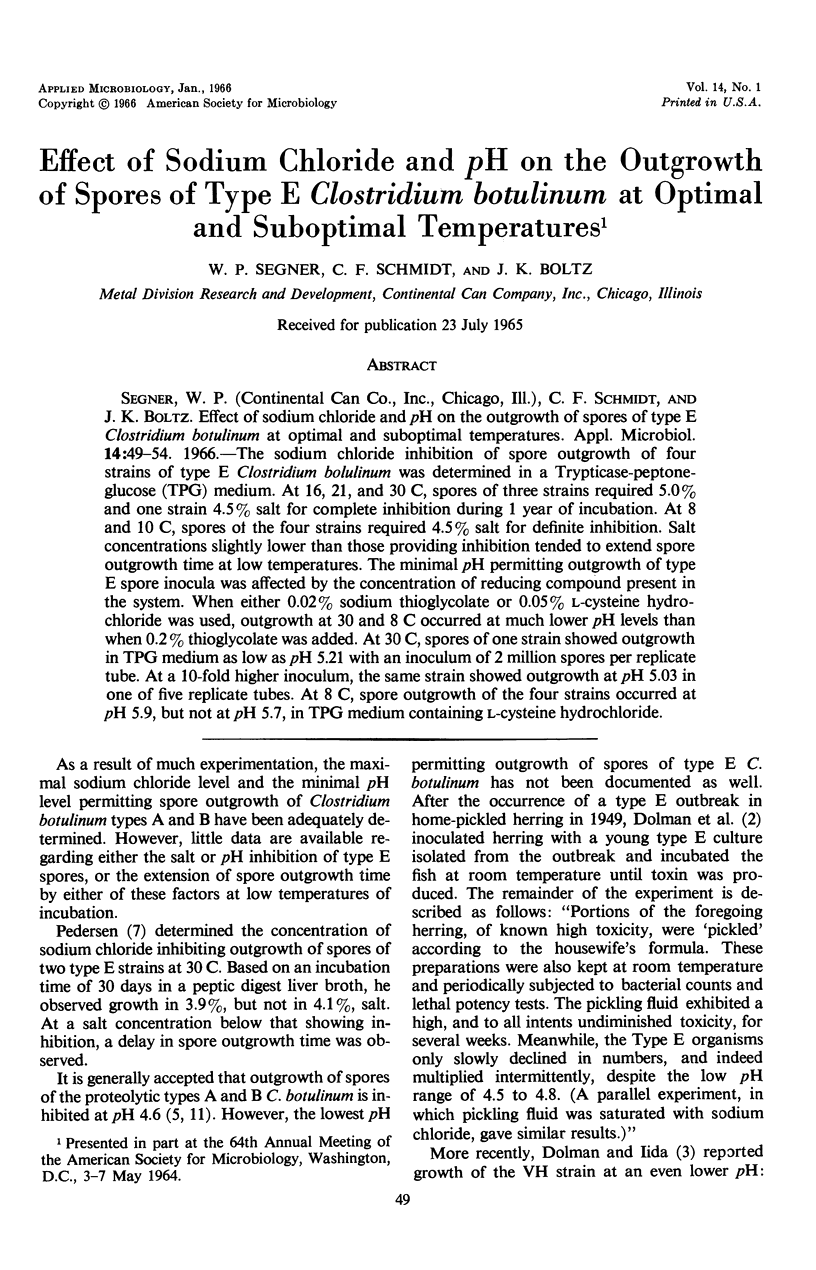
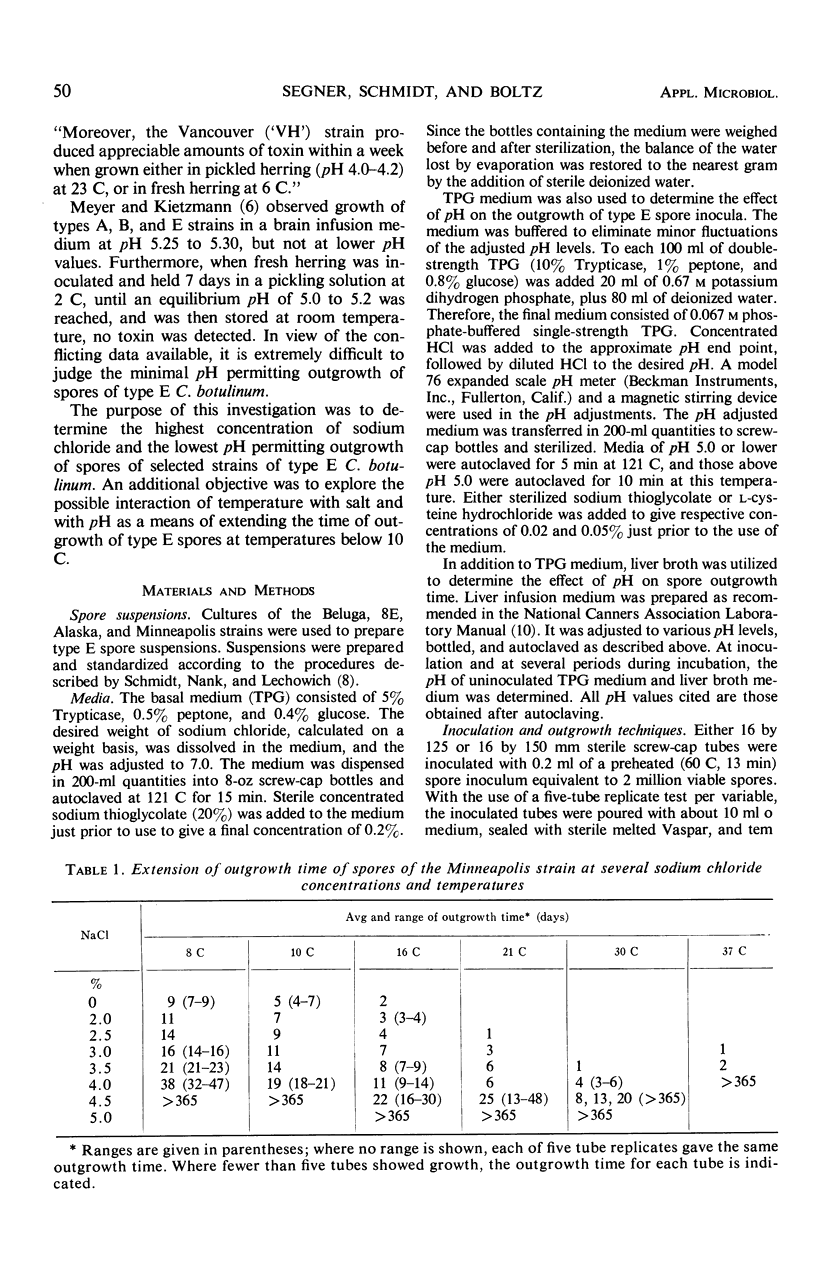
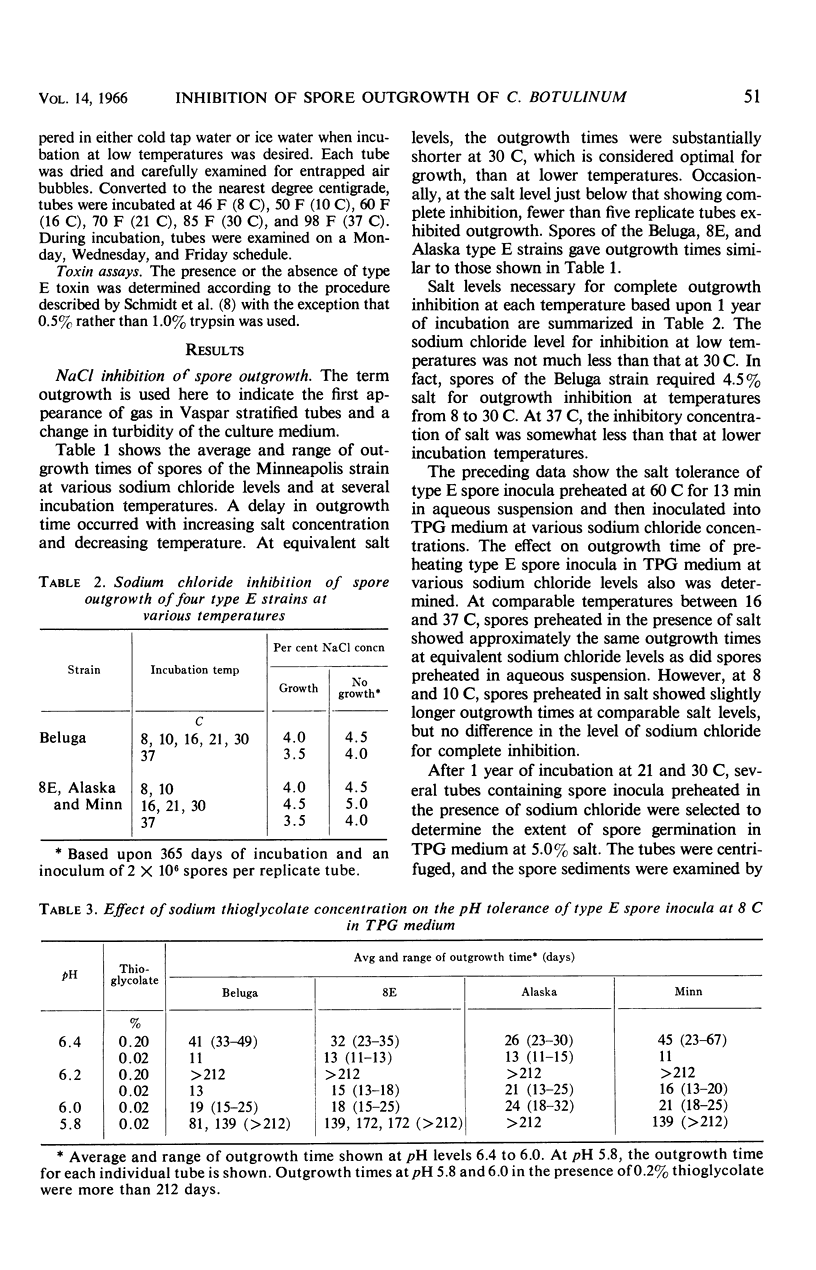
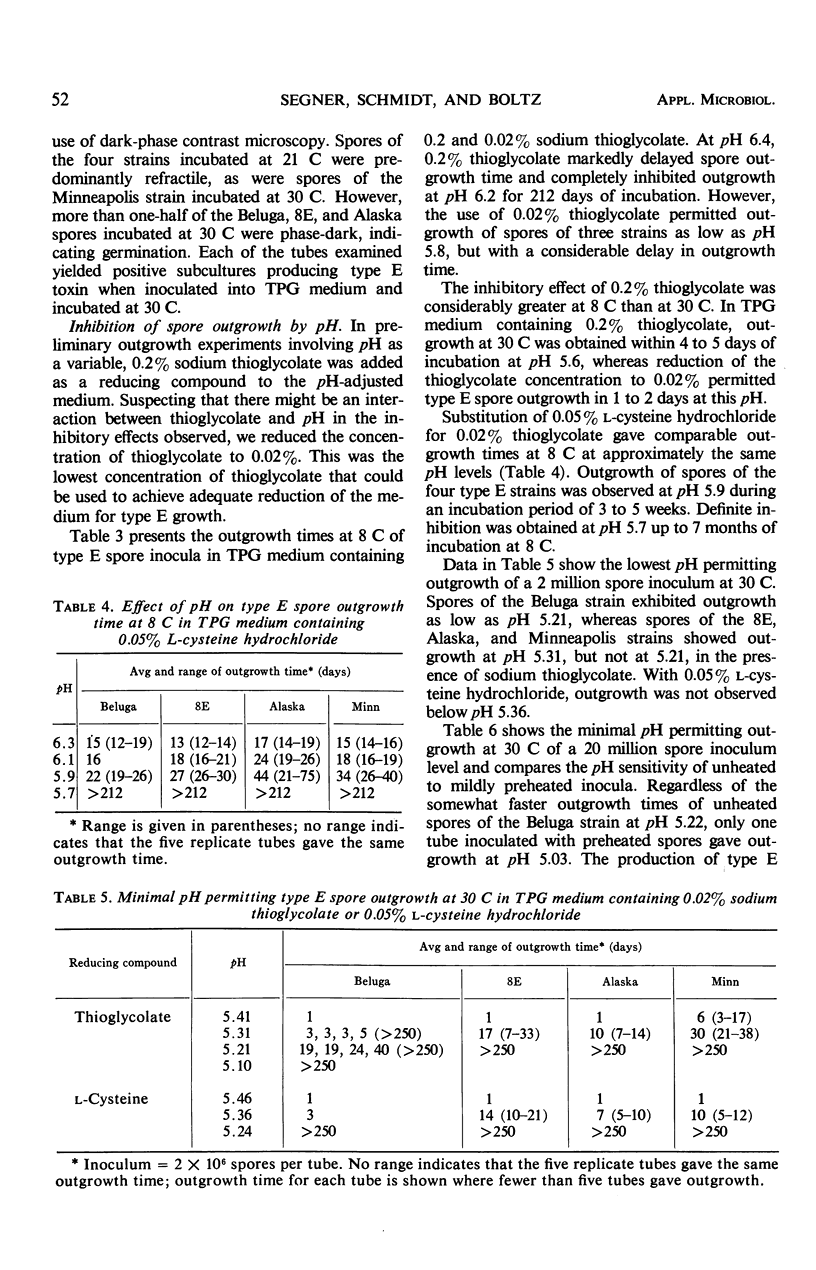
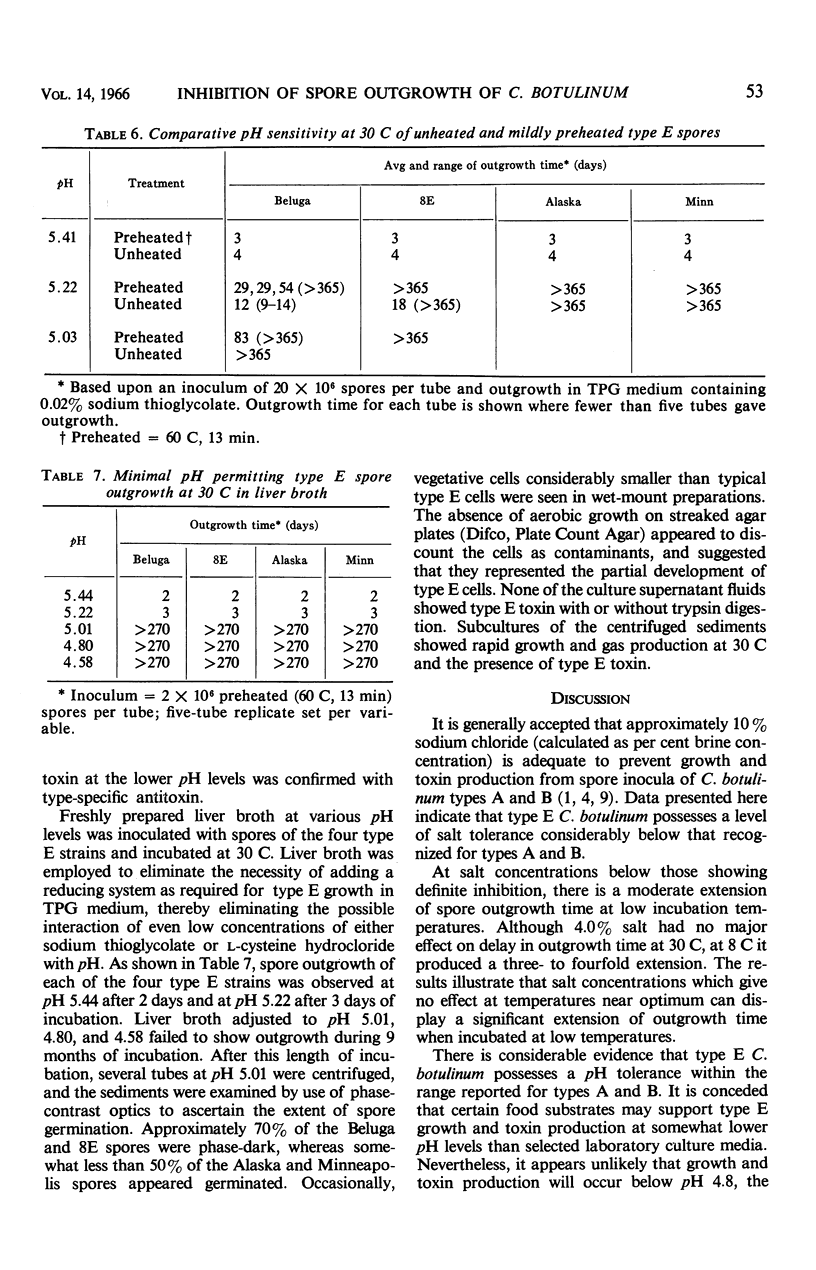
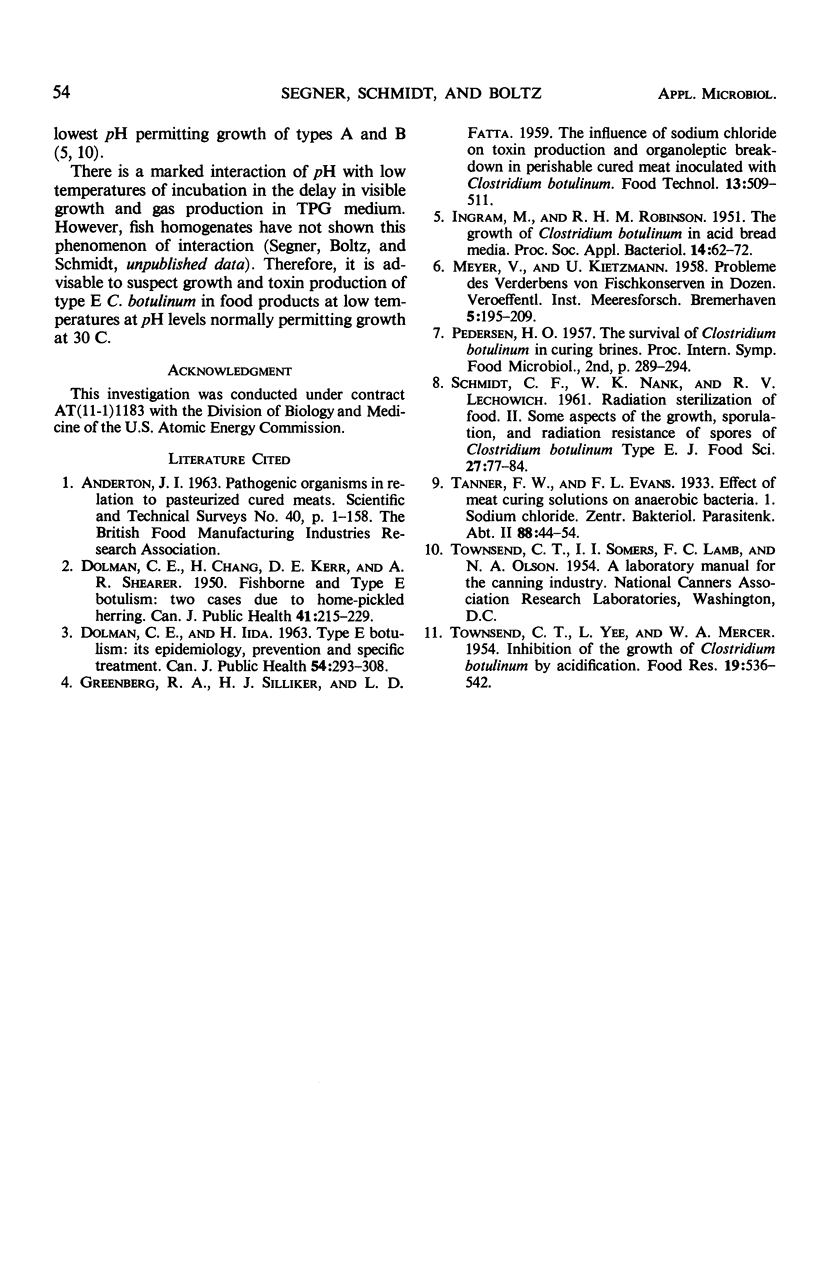
Selected References
These references are in PubMed. This may not be the complete list of references from this article.
- DOLMAN C. E., CHANG H., KERR D. E., SHEARER A. R. Fish-borne and type E botulism: two cases due to home-pickled herring. Can J Public Health. 1950 Jun;41(6):215–229. [PubMed] [Google Scholar]
- DOLMAN C. E., IIDA H. Type E botulism: its epidemiology, prevention and specific treatment. Can J Public Health. 1963 Jul;54:293–308. [PubMed] [Google Scholar]


